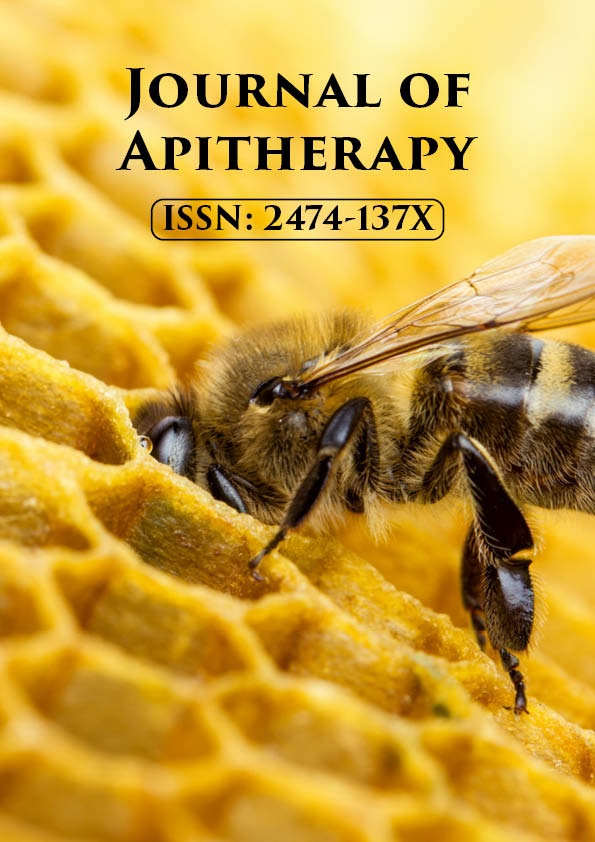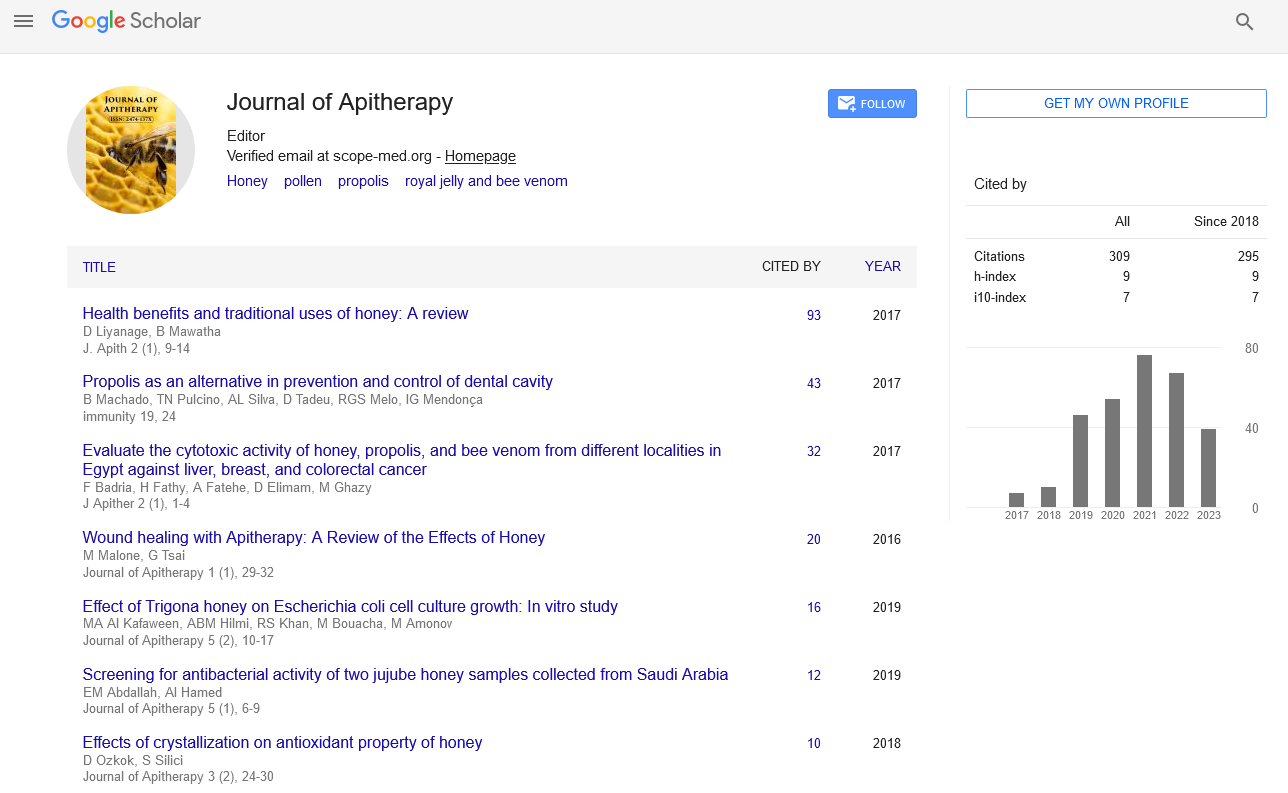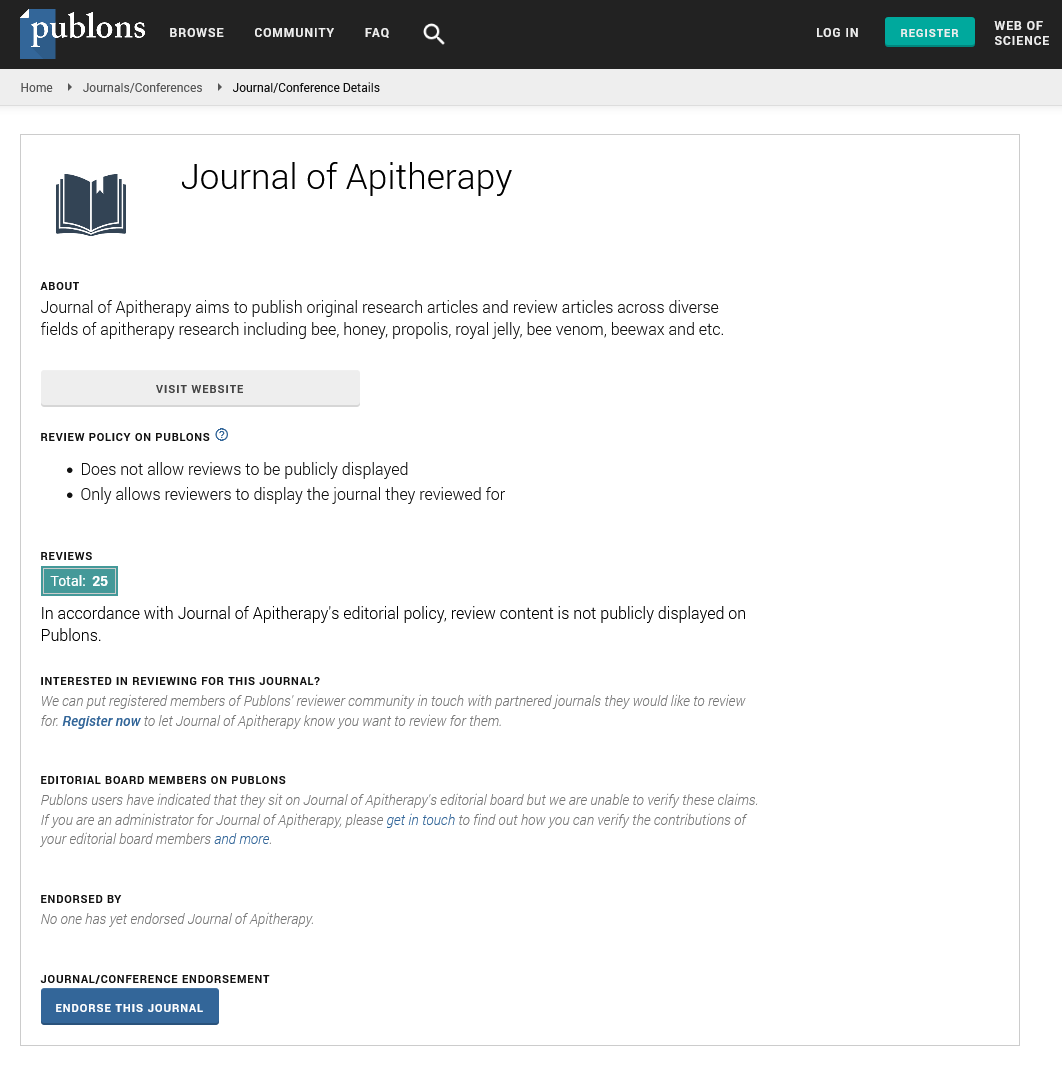Chemical investigation and cytotoxic activity of bee venoms collected by dissection and electric-shocked methods
Abstract
Farid A. Badria, Hassan M. Fathy, Ashraf S. Fatehe, Mohamed H. Ahmed, Mohamed G. Ghazy
Introduction: Cancer is a large group of disorders characterized by uncontrolled cellular proliferation. It is one of the most devastating diseases all over the world. Recently, there is an increased interest in the clinical use of natural products as a safe, efficient, and economic therapeutic alternative. Honeybee products therapy, apitherapy, was used to control various diseases including cancer.Objectives: The primary objective of this study was to screen the potential cytotoxic effects of bee venoms (BVs) against different cancer types and also to evaluate the reported bee venoms-caused hemolysis on human red blood cells.Materials and Methods: Samples of venom were collected from different Egyptian localities with different techniques and tested by 3-(4,5-dimethyl-thiazolyl)-2,5-diphen-yltetrazolium bromide cell-based assay against liver (Hep-G2), colorectal (Caco-2), and breast (MCF-7) cancer cell lines. Also, different concentrations of BVs were used to evaluate the hemolysis percentage caused by BVs if injected into the circulation.Results: The results showed that Italian dissected method-BV was the most active among all the tested samples against Hep-G2 (93.92%), Caco-2 (93.92%), and MCF-7 (90.17%). In addition, all BVs at all concentrations caused high hemolysis percentage.Conclusion: The results showed that BV is an interesting agent that has valuable activities against Hep-G2, Caco-2, and MCF-7. Being the most effective agent against cancer cell lines, BV might be incorporated in cancer remedy regimens after further studies but the inherent limitation that BVs cause severe hemolysis to blood cells at low concentrations would require more research to avoid the risk of using BV in vivo.
PDF






